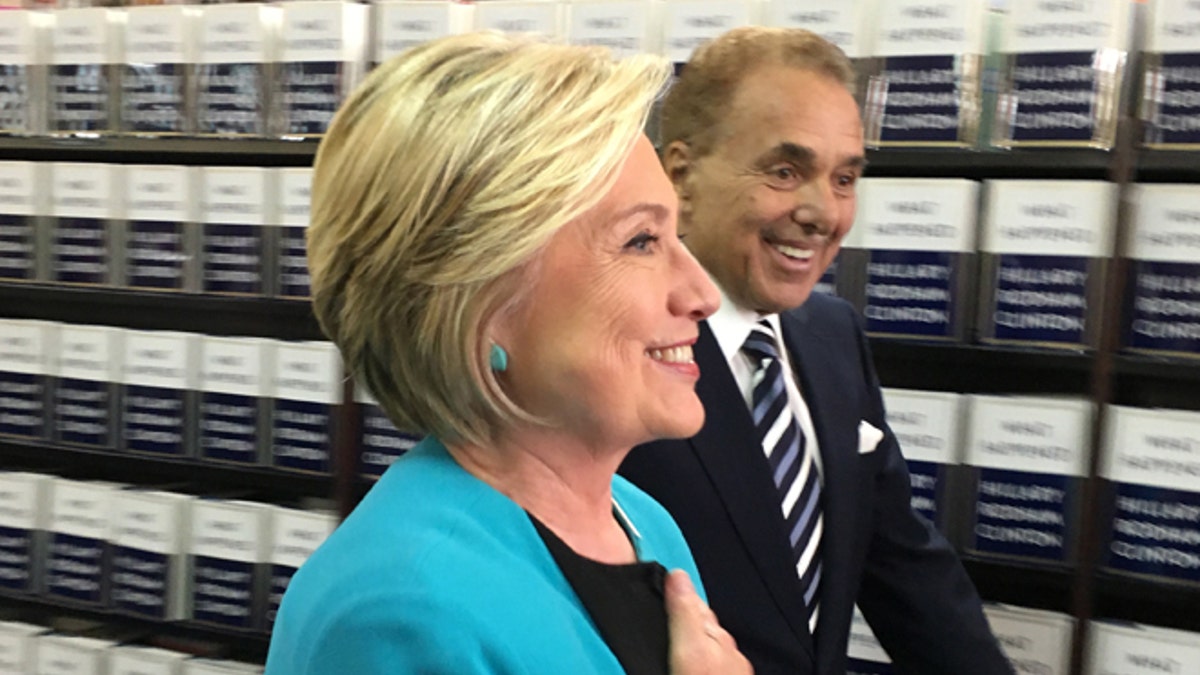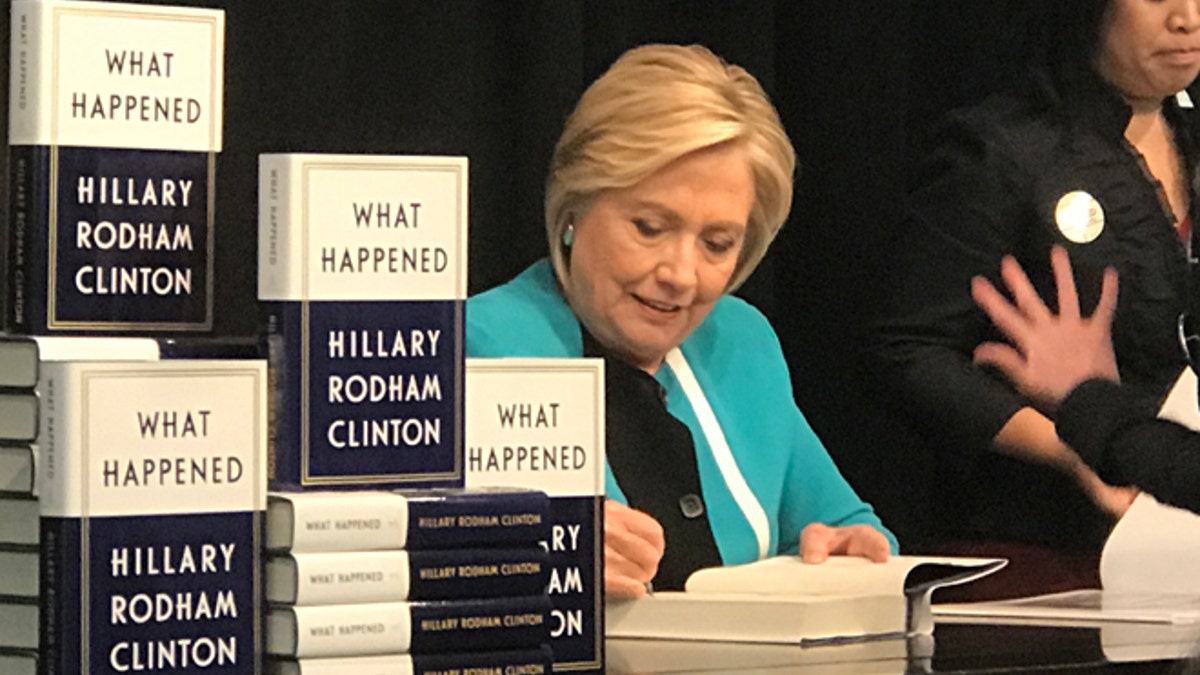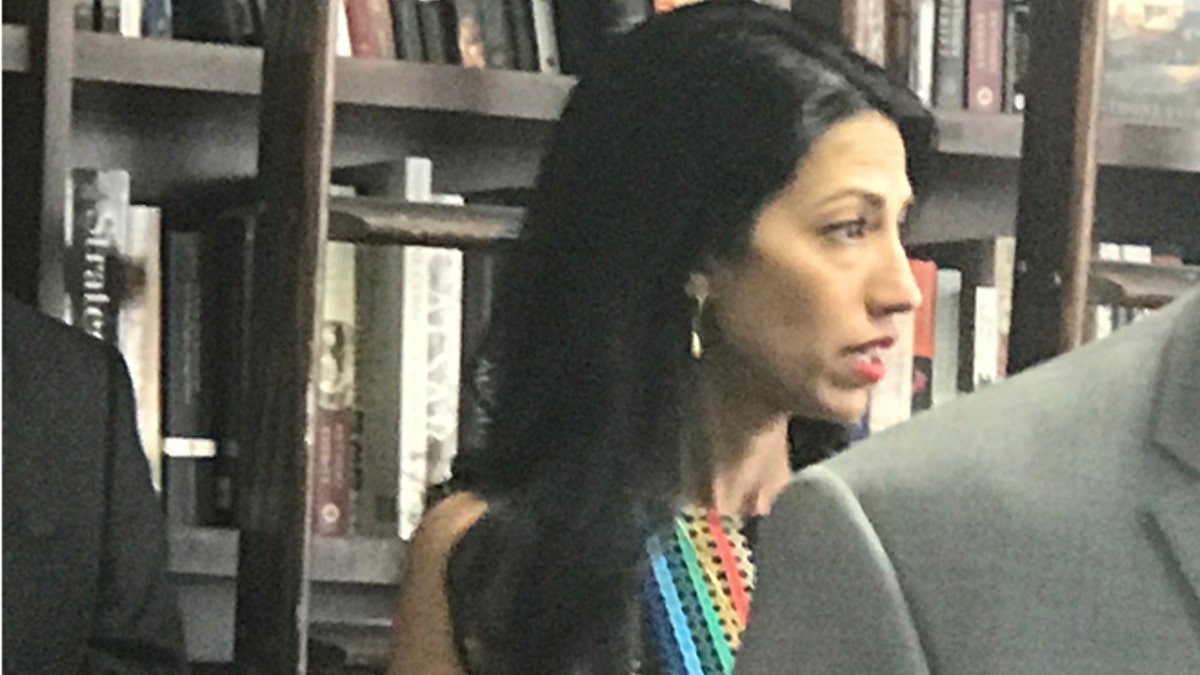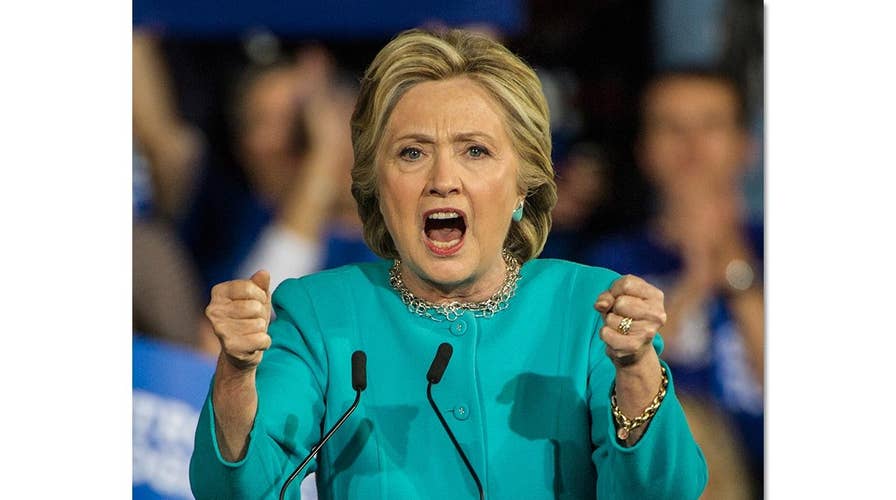Clinton book: Blames voter suppression for Wisconsin loss
Hillary Clinton is pointing a lot of fingers for her 2016 election loss to Donald Trump. In her new memoir 'What Happened,' Clinton cites a study on why she lost Wisconsin that has some experts scratching their heads
Hillary Clinton's newly released campaign memoir adds voter ID laws and Supreme Court Chief Justice John Roberts to the list of reasons why she lost the 2016 presidential election.
In “What Happened,” which was formally released on Tuesday, Clinton tells the full, 469-page “story” of what she “saw, felt and thought during two of the most intense years” she’s ever experienced.
She kicked off the promotion Tuesday at Barnes & Noble in New York City’s Union Square, arriving to the event an hour late after some supporters waited overnight outside the store to see her. She eventually started signing her book -- which claims to “pull back the curtain” on a number of factors that contributed to her loss.
While previously released passages faulted James Comey and even primary rival Bernie Sanders, the end of the book turns focus to allegedly discriminatory voter laws.

On page 418, Clinton begins a section titled “Voter Suppression,” where she claims the Trump campaign “actively tried to discourage people from voting at all,” and adds that their play was “just the latest” in a “long-term” Republican strategy to “discourage and disenfranchise” Democratic-leaning voters.
“The Supreme Court under Chief Justice John Roberts opened the floodgates by gutting the Voting Rights Act in 2013. When I was in the Senate, we voted to reauthorize the law 98 to 0 and President George W. Bush signed it,” Clinton writes. “But Justice Roberts essentially argued that racism was a thing of the past, and therefore the country no longer needed key protections of the Voting Rights Act.”
Clinton describes Roberts' decision as “one of the worst the court has ever made,” and goes on to list “fourteen states” that had new voter ID restrictions by the 2016 election that she wrote were “aimed at weeding out students, poor people, the elderly, and people of color.” She goes on to blame Kansas Secretary of State Kris Kobach, now-vice chairman of President Trump’s voter fraud commission, for much of the “national effort.”
As part of her case, Clinton cites a debunked study on Wisconsin.
“Since the election, studies have documented how big an impact all this suppression had on the outcome. States with harsh new voting laws, such as Wisconsin, saw turnout dip 1.7 points, compared with a 1.3-point increase in states where the law didn’t change,” Clinton writes.
“In Wisconsin, where I lost by just 22,748 votes, a study from Priorities USA estimated that the new voter ID law helped reduce turnout by 200,000 votes, primarily from low-income and minority areas,” Clinton says. “... Before the election, one Republican state representative in Wisconsin predicted the new law would help Trump pull off an upset in the state. It turns out he was right.”

But PolitiFact slammed that study as “Mostly False.”
“Priorities USA, a group that supports Democratic candidates, had issued a report saying a decline in voter turnout between the 2012 and 2016 presidential elections in Wisconsin was entirely due to the state’s photo ID requirement,” PolitiFact wrote Tuesday. “But experts told us that while photo ID requirements may reduce turnout to some extent, they questioned the methodology of the report.”
PolitiFact also wrote that experts said there was “no way” to put a number on how many people did not vote in Wisconsin because of the ID requirement.
Clinton also infamously did not visit Wisconsin after the primaries.
But throughout “What Happened,” Clinton blames multiple factors for her loss—like the attention on “Those Damn Emails,” the “unprecedented intervention in our election” by former FBI Director Comey, and the “audacious information warfare waged from the Kremlin.”
Clinton even questioned the support of those who attended the massive Women’s March on Jan. 21. On page 14, Clinton explains how “bittersweet” the day after the inauguration was, as thousands of people joined to march on Washington.

“Yet I couldn’t help but ask where those feelings of solidarity, outrage, and passion had been during the election,” Clinton writes, noting the dozens of women who have approached her in months since, some apologizing for not voting. “We all have to live with the consequences of our decisions.”
Clinton walked into the formal release on Tuesday with the chairman and founder of Barnes & Noble, Len Riggio. She was joined by longtime aide Huma Abedin and Nick Merrill, her campaign press secretary. The event was a prelude to a bigger book tour being launched across the country and Canada set to last through December.
According to the director of corporate communications for B&N, Alan McNamara, they sold more than 1,200 copies of “What Happened” at the event by around noon—more than during her 2014 launch of “Hard Choices.”
White House Press Secretary Sarah Sanders was asked at the press briefing Tuesday whether President Trump would read Clinton’s book.
“I’m not sure,” Sanders said Tuesday. “I would think that he’s pretty well-versed on what happened.”





